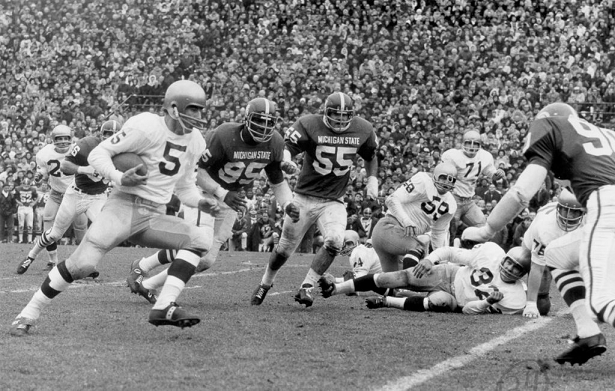


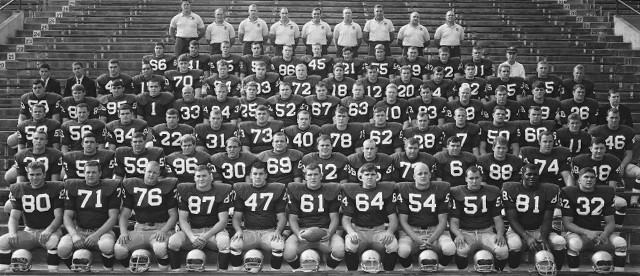
| Purdue (9-2) | 26-14 | #5 |
| at Northwestern (3-6-1) | 35-7 | |
| Army (8-2) | 35-0 | #23 |
| North Carolina (2-8) | 32-0 | |
| at Oklahoma (6-4) | 38-0 | #15 |
| (Philadelphia) Navy (4-6) | 31-7 | |
| Pittsburgh (1-9) | 40-0 | |
| Duke (5-5) | 64-0 | |
| at Michigan State (9-0-1) | 10-10 | #2 |
| at Southern Cal (7-4) | 51-0 | #10 |
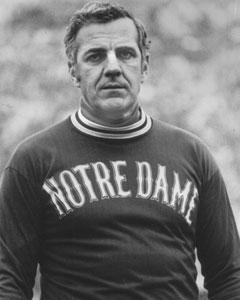
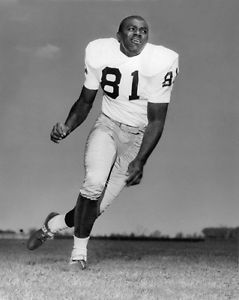
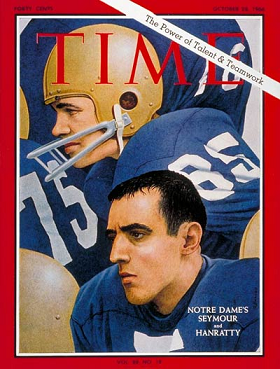
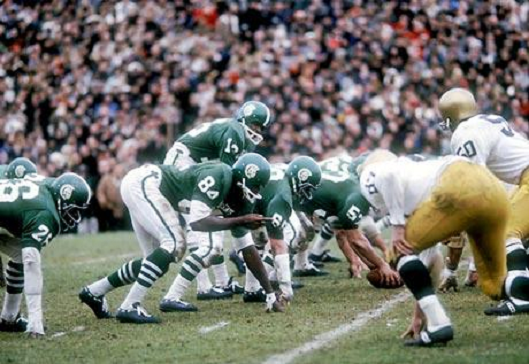
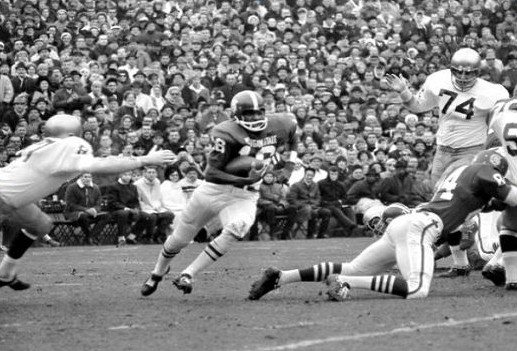
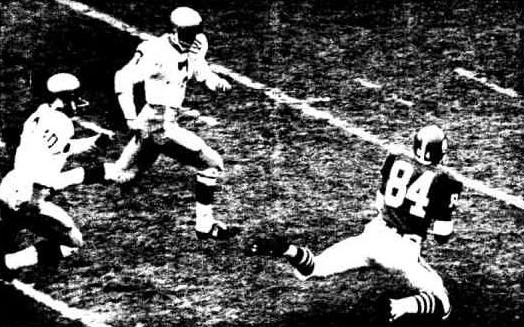
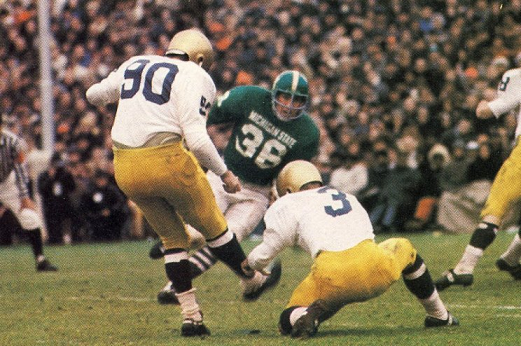
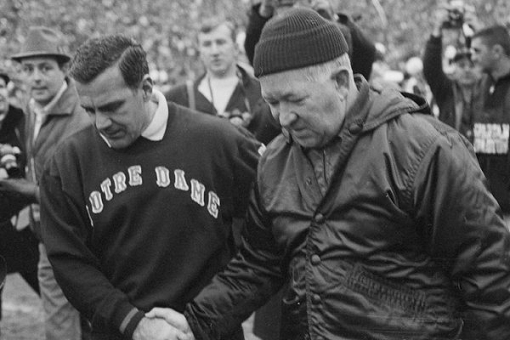
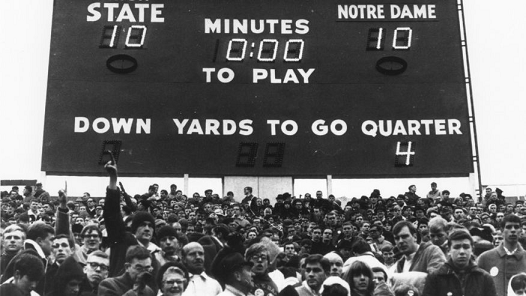
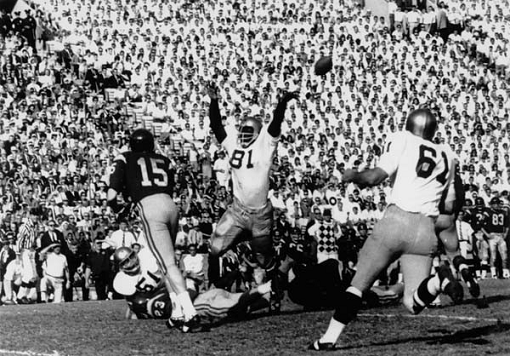
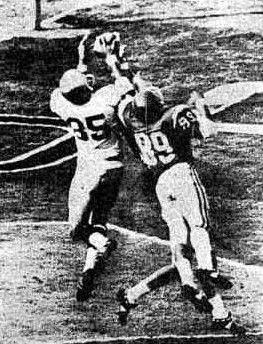
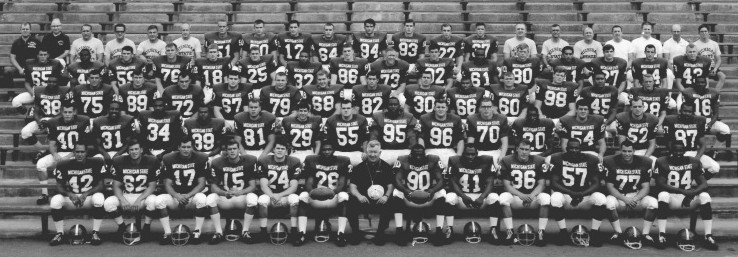
| North Carolina State (5-5) | 28-10 | |
| Penn State (5-5) | 42-8 | |
| at Illinois (4-6) | 26-10 | |
| Michigan (6-4) | 20-7 | |
| at Ohio State (4-5) | 11-8 | |
| Purdue (9-2) | 41-20 | #5 |
| at Northwestern (3-6-1) | 22-0 | |
| Iowa (2-8) | 56-7 | |
| at Indiana (1-8-1) | 37-19 | |
| Notre Dame (9-0-1) | 10-10 | #1 |
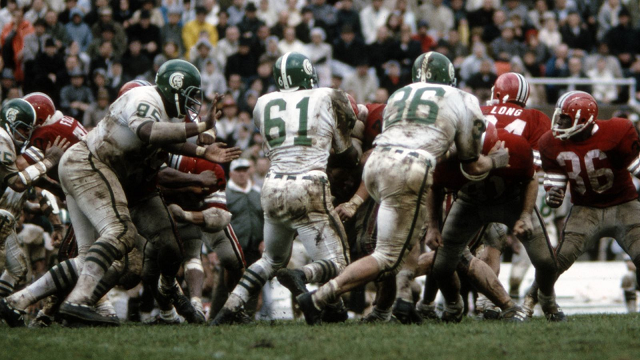
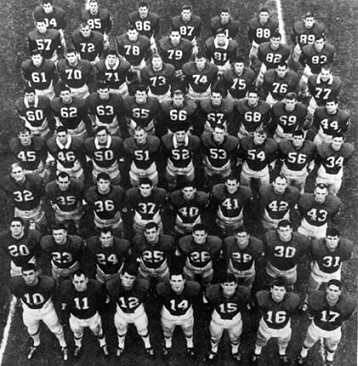
| Louisiana Tech (1-9) | 34-0 | |
| at Mississippi (8-3) | 17-7 | #17 |
| Clemson (6-4) | 26-0 | |
| at Tennessee (8-3) | 11-10 | #18 |
| Vanderbilt (1-9) | 42-6 | |
| Mississippi State (2-8) | 27-14 | |
| Louisiana State (5-4-1) | 21-0 | #24 |
| South Carolina (1-9) | 24-0 | |
| (Mobile) Southern Miss (6-4) | 34-0 | |
| (Birmingham) Auburn (4-6) | 31-0 | |
| Sugar Bowl Nebraska (9-2) | 34-7 | #7 |
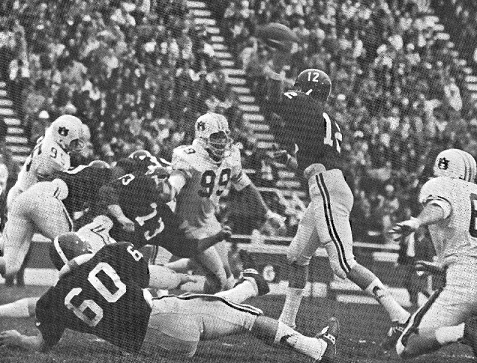
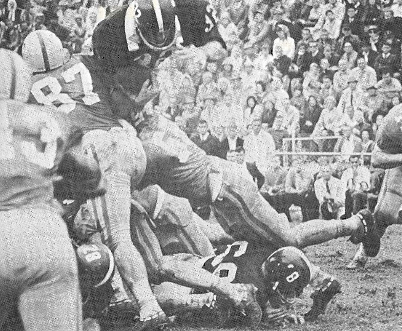
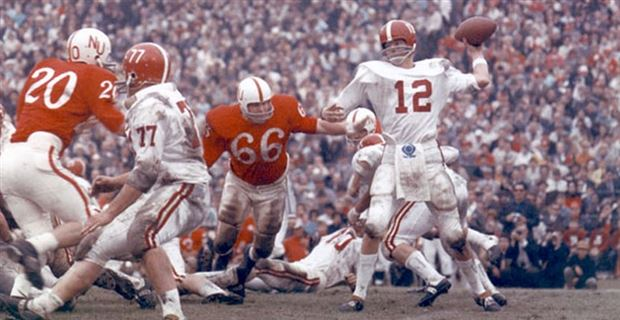
| Notre Dame 9-0-1 | Michigan State 9-0-1 | Alabama 11-0 | |||||||||||||||||||||||||||||||||||||||
|---|---|---|---|---|---|---|---|---|---|---|---|---|---|---|---|---|---|---|---|---|---|---|---|---|---|---|---|---|---|---|---|---|---|---|---|---|---|---|---|---|---|
|
|
|
|||||||||||||||||||||||||||||||||||||||
| Poling (math system) Helms Matthews (math) Billingsley (math) Sagarin (math) Dunkel (math) Litkenhous (math) DeVold (math) Coaches Poll FWAA Football News NFF | 5.0 |
| National Championship Foundation AP Poll | 4.6 |
| College Football Researchers | 4.1 |
| Sagarin ELO-Chess (math) Berryman (math) | 3.55 |
| 1) National Championship Foundation | 4.69 |
| 2) Billingsley (math system) | 4.67 |
| 3) Houlgate (math) | 4.53 |
| 4)
College
Football Researchers Association |
4.48 |
| 5) Sagarin-ELO (math) | 4.46 |
| 6) DeVold
(math) |
4.44 |
| 7) Poling
(math) |
4.38 |
| 8) Helms Foundation | 4.35 |
| 9) Boand (math) | 4.27 |
| 10) Sagarin (math) | 4.24 |
| 11) Litkenhous
(math) |
4.22 |
| 12) AP Poll | 4.08 |
| 13) Dunkel (math) | 4.05 |
| 14) Williamson (math) | 3.86 |
| 15) Berryman (math) | 3.17 |
| 16) Coaches Poll | 3.05 |
| 1) Boand (math system) | 4.26 |
| 2) College Football Researchers Association | 4.22 |
| 3) Poling (math) | 4.11 |
| 4) Helms | 4.09 |
| 5) Sagarin-ELO (math) | 4.06 |
| 6) National Championship Foundation | 3.96 |
| 7) Dickinson (math) | 3.49 |
| 8) Houlgate (math) | 3.35 |
| 9) Billingsley (math) | 3.34 |
| 10) Sagarin (math) | 3.28 |
| 11) Parke Davis | 2.77 |
| 1) Houlgate (math system) | 4.5 |
| 2) Helms | 4.3 |
| 3) Parke Davis | 4.2 |
| 4) National Championship Foundation | 3.7 |
| 5) Billingsley (math) | 3.6 |